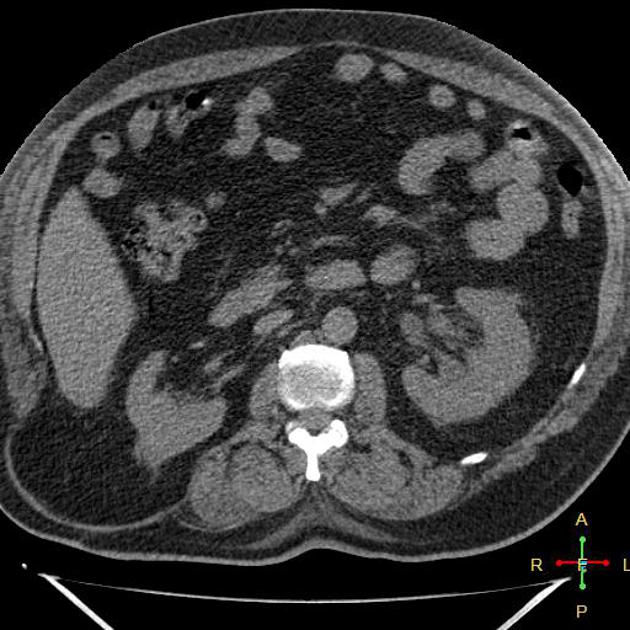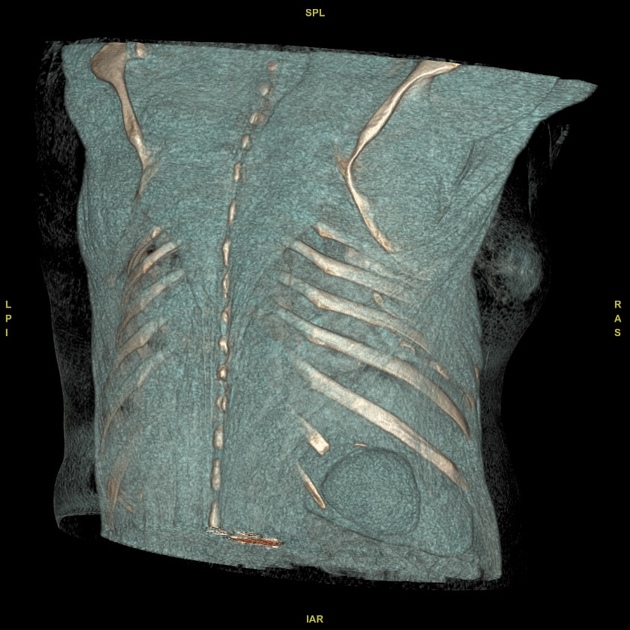Lumbar hernias (alternative plural: herniae) are a rare form of posterior abdominal hernia.
On this page:
Epidemiology
Most common in patients aged between 50 and 70 years with a male predominance 1.
Clinical presentation
Patients with lumbar hernias can present with a variety of symptoms, including a posterolateral mass, back pain, bowel obstruction (if contents contain bowel), or urinary obstruction (if contents are kidney/ureter).
Pathology
Lumbar hernias occur through defects in the lumbar muscles or the posterior fascia, below the 12th rib and above the iliac crest. Two types are described, according to the anatomical location of the hernial neck:
-
superior lumbar hernia (Grynfeltt-Lesshaft hernia)
- occurs through the superior lumbar triangle
- more common than inferior lumbar hernias
-
inferior lumbar hernia (Petit hernia)
- occurs through the inferior lumbar triangle
Etiology
There are three broad etiologies for lumbar hernias:
-
congenital hernias (20%)
- discovered in infancy and are due to defects in the musculoskeletal system
- may be associated with other malformations
-
primary acquired lumbar hernias (55%)
- spontaneous, without a causal factor such as surgery, infection, or trauma
- risk factors include age, extremes of body habitus, quick weight loss, chronic disease, muscular atrophy, chronic bronchitis, wound infection, postoperative sepsis, and strenuous physical activity
-
secondary acquired lumbar hernias (25%)
- may be caused by blunt, penetrating, or crushing trauma; fractures of the iliac crest; surgical lesions; hepatic abscesses; infections in pelvic bones, ribs, or lumbodorsal fascia; or infected retroperitoneal hematomas
Contents
Lumbar hernias may contain a number of intra- or retroperitoneal structures including:
History and etymology
J Grynfeltt and P Lesshaft independently described superior lumbar hernias in 1866 8 and 1870 9, respectively.
The first description of the inferior or superficial lumbar hernia by French surgeon Jean-Louis Petit (1672-1750) in 1738 13,14.

















 Unable to process the form. Check for errors and try again.
Unable to process the form. Check for errors and try again.